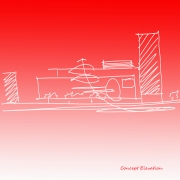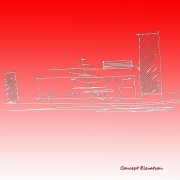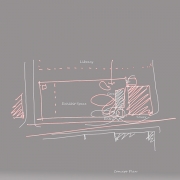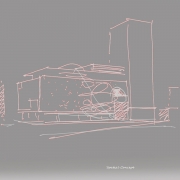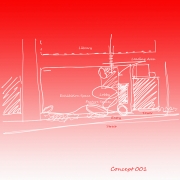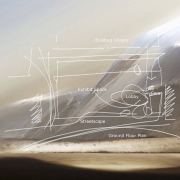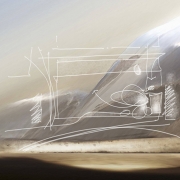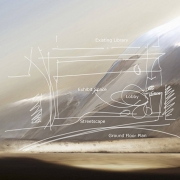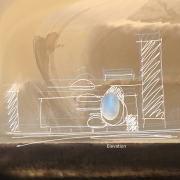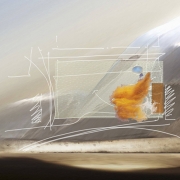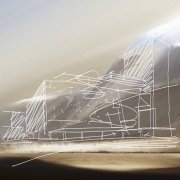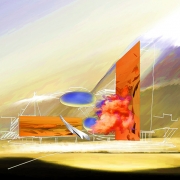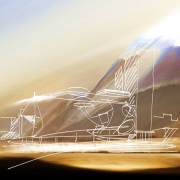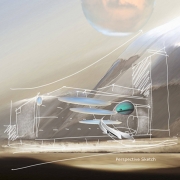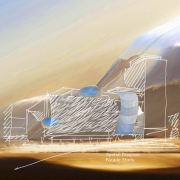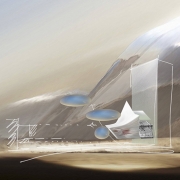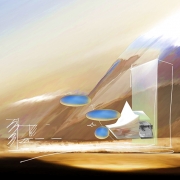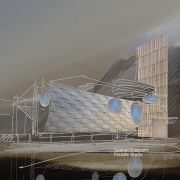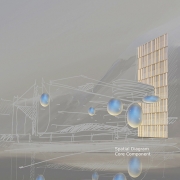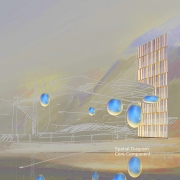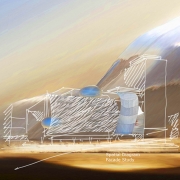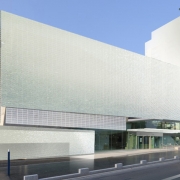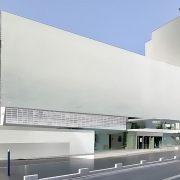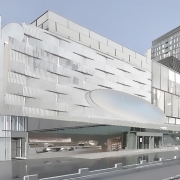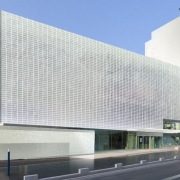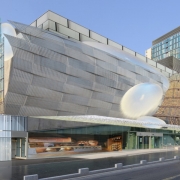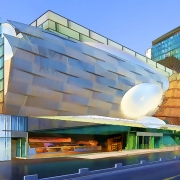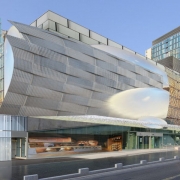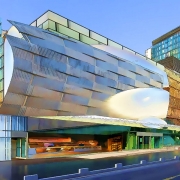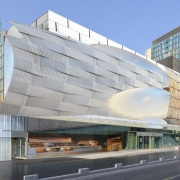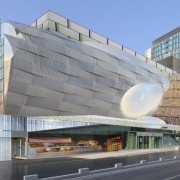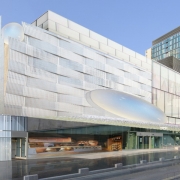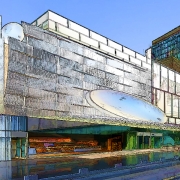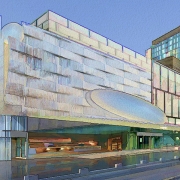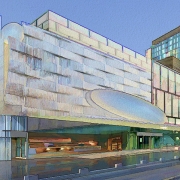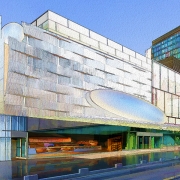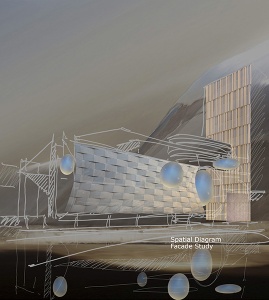
Process refers to the way architects think about architecture. Images and concepts come to mind and they are translated through the act of drawing. The process of drawing tests the reality of architecture: the materials, details, forms and construction methods. Drawing is the act of visualization. It anchors the architecture in it’s context and addresses construction by making a meaningful whole out of parts. Process is the method of thinking about architecture with sketches and precise attention to details.
With emphasis on “visualization” and “acceleration” and “fluidity”, the process is three dimensional and provides a “steady stream” of sketches coupled with dialogue. This “conversation of images” is generated through sketches, image metaphor, and collage. Each segment of the process resets the direction of the design. Design is fluid and achieved through a series of “image alterations and updates” until the direction is set. In general, preliminary sketches require minimal direction and are assembled with quick concept sketches. Collaboration occurs at all stages of design. “Image conversations” via computer are stored as layered visuals, typically Photoshop, until the completion of the process.
Parameters
Information – Varying degrees of contextual and building information are available for the construction of images. Usually, at the outset, information is conceptual and minimal. Images are constructed based on experience, industry standards and design parameters.
Design parameters – Clients assist in setting the direction of the drawings either as commentary or by a “cloud of images” representing a fluid direction.
Drawing Types
Digital sketch format “assembles” images into photo-real collages and overlays of digital line drawings. Continuous review alters the direction and scope of production. Images can be generated with a minimum of direction.
Traditional sketch format utilizes ink, pencil and color to generate hand drawings. All drawings are scanned and transmitted.
Streaming sketch formats are used to provide a continuous set of images, from plan, section, and elevation to “spatial” constructs. These can be independently generated or in conjunction with in-house designers. Spaces can be generated early in the design process and updated as the design progresses.
Concept sketches are generated as abstractions of spaces and surfaces in an attempt to accelerate critical design thinking. Visual metaphors, material representations and surface approximations are used to align formal design and detail decisions with materials and spaces.
Digital variants
After completion of the prototype, generations of the drawing are produced utilizing digital trace elements that alter the style of the image. Digital variants fine tune both the feel and image content. These image variants are used to communicate a cohesive story of the design process.
In general, all sketches are referenced by number and direction and can be updated and relayered into any stage of the process.

